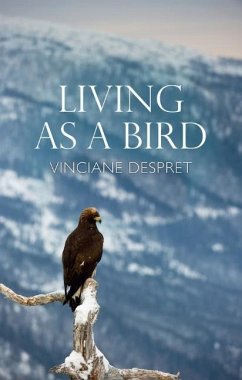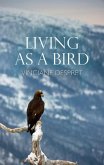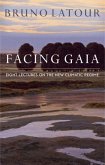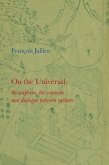In the first days of spring, birds undergo a spectacular metamorphosis. After a long winter of migration and peaceful coexistence, they suddenly begin to sing with all their might, varying each series of notes as if it were an audiophonic novel. They cannot bear the presence of other birds and begin to threaten and attack them if they cross a border, which might be invisible to human eyes but seems perfectly tangible to birds. Is this display of bird aggression just a pretence, a game that all birds play? Or do birds suddenly become territorial - and, if so, why?
By attending carefully to the ways that birds construct their worlds and ornithologists have tried to understand them, Despret sheds fresh light on the activities of both and, at the same time, enables us to become more aware of the multiple worlds and modes of existence that characterize the planet we share in common with birds and other species.
By attending carefully to the ways that birds construct their worlds and ornithologists have tried to understand them, Despret sheds fresh light on the activities of both and, at the same time, enables us to become more aware of the multiple worlds and modes of existence that characterize the planet we share in common with birds and other species.
"fascinating"
The Environmental Magazine
'Without forgetting the dangers of violence and extinction, Despret's writing always makes the world more generous, open, surprising, and generative. Living as a Bird inquires about and engages with "territory" and "territoriality" in exquisite specificity and concrete detail, exploring these birds, these writers and observers of birds, these sounds and calls, these rituals and affects. In the process, this potent little book describes and proposes a polyphonic score. Readers learn how to pay attention, to attend, to tune the senses and to open the imagination. What emerges are bird-rich, science-rich stories that are less deterministic, less self-satisfied with Explanation, more open to manoeuvre, both for birds and for humans who tune themselves to complex avian performances of their becoming in place.'
Donna Haraway, Professor Emerita at the University of California, Santa Cruz
The Environmental Magazine
'Without forgetting the dangers of violence and extinction, Despret's writing always makes the world more generous, open, surprising, and generative. Living as a Bird inquires about and engages with "territory" and "territoriality" in exquisite specificity and concrete detail, exploring these birds, these writers and observers of birds, these sounds and calls, these rituals and affects. In the process, this potent little book describes and proposes a polyphonic score. Readers learn how to pay attention, to attend, to tune the senses and to open the imagination. What emerges are bird-rich, science-rich stories that are less deterministic, less self-satisfied with Explanation, more open to manoeuvre, both for birds and for humans who tune themselves to complex avian performances of their becoming in place.'
Donna Haraway, Professor Emerita at the University of California, Santa Cruz








